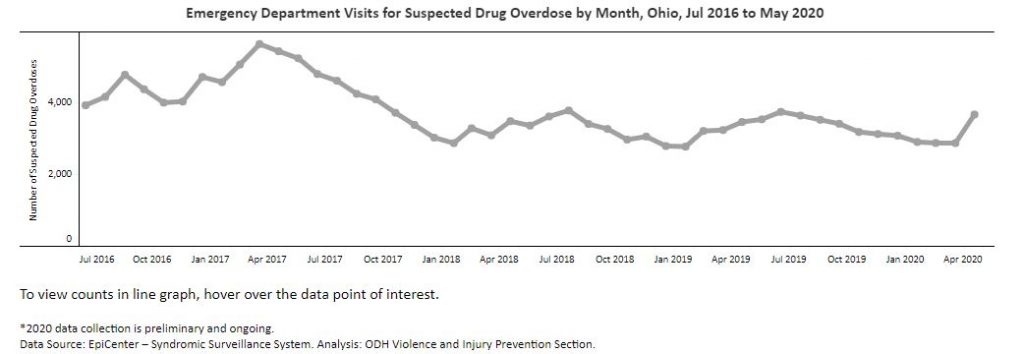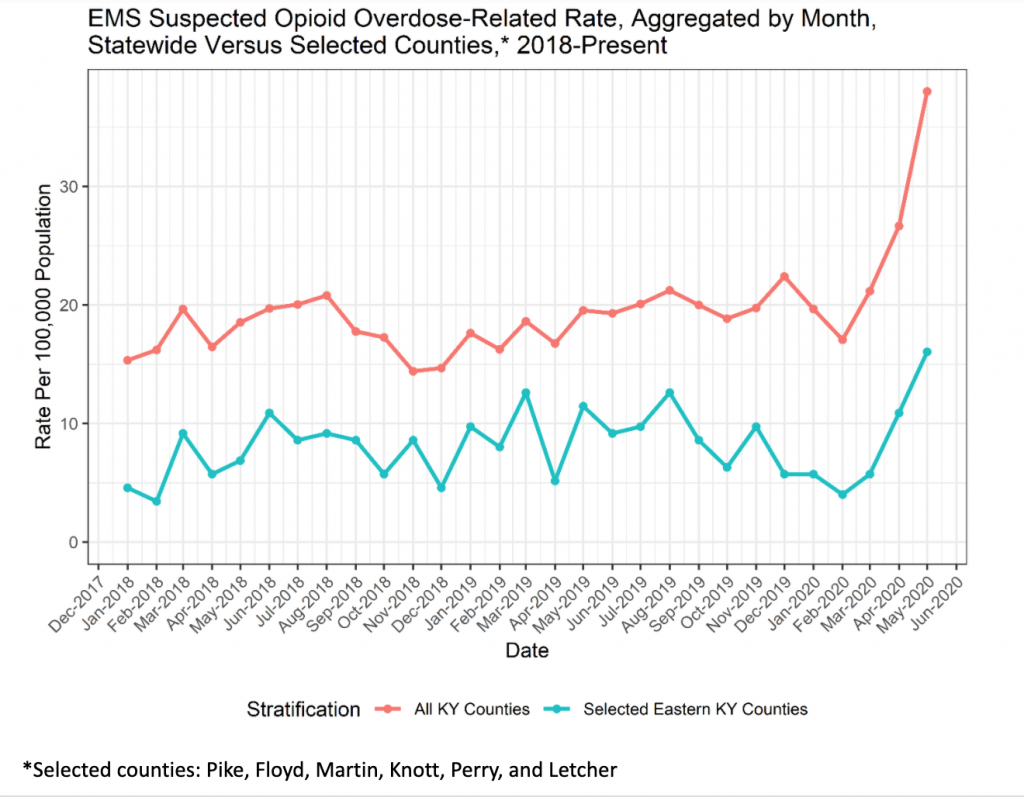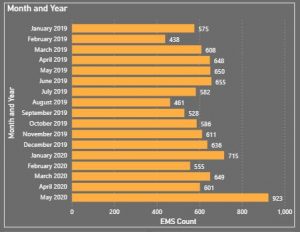News
Overdose Incidents Rose Sharply Around Ohio Valley During Pandemic
By: Aaron Payne | Ohio Valley ReSource
Posted on:
PORTSMOUTH, Ohio (OVR) — Emergency response data from across the Ohio Valley show sharp increases in suspected drug overdoses since March, when health measures including school and business closures and stay-at-home orders increased social isolation. For public health officials, it’s a grim reminder that another epidemic is ongoing and possibly worsening during the isolation associated with the coronavirus pandemic.
Ohio, for example, saw emergency department visits related to suspected overdoses increase from 2,868 in April to 3,666 in May after nine months of those numbers declining.

“The drug supply has become so volatile and dangerous that more and more of these people…they don’t even have vital signs by the time the ambulance gets there in five minutes,” Lisa Roberts, a public health nurse with the City Health Department in Portsmouth, Ohio, said.
Portsmouth saw an increase in fentanyl-related overdoses in 2019 that carried into the months before the coronavirus pandemic began, according to Roberts. This trend lines up with other places impacted by the opioid crisis nationwide.
She said they’ve worked to distribute more of the overdose reversal medication NARCAN during the pandemic. She encourages those at risk for substance use disorder to isolate with someone so they can talk about their triggers and administer the medication if needed.
The rate of suspected opioid-related overdoses in Kentucky has nearly doubled during the coronavirus pandemic, with an estimated 20 overdoses per 100,000 residents in February and an estimated 38 overdoses per 100,000 residents in May. That’s according to the Kentucky Injury Prevention and Research Center, which is part of the state’s Department of Health.

Public health and safety officials in Kentucky have been aware of the spike in cases since at least early June.
“In the last 48 hours we have encountered at least 6 overdoses according to 911 records,” wrote a representative of the Perry County Sheriff’s Office on the department’s Facebook page. “Deputies discovered several persons who had stopped breathing and were able to initiate life saving measures to bring them back. One family member had also resuscitated a loved one before our arrival who had stopped breathing. This is a very dangerous situation regardless of what you think your tolerance level is.”
The Floyd County Health Department on June 12 expressed concerns that a spate of fatal overdoses in that county could have been made worse by substances contaminated with fentanyl or carfentanil.

State researchers found that emergency room visits related to overdoses jumped from around 484 in April to a little more than 663 in May after three months of declining numbers.
EMS responses for suspected overdoses in West Virginia went from 601 in April to 923 in May, which is roughly a 50 percent increase from the same time last year.
The full impact of the coronavirus pandemic on the addiction epidemic will not be realized until later, but the numbers now give reason for public health officials to say it is still an issue that needs attention and resources.
ReSource reporter Sydney Boles contributed to this story.

